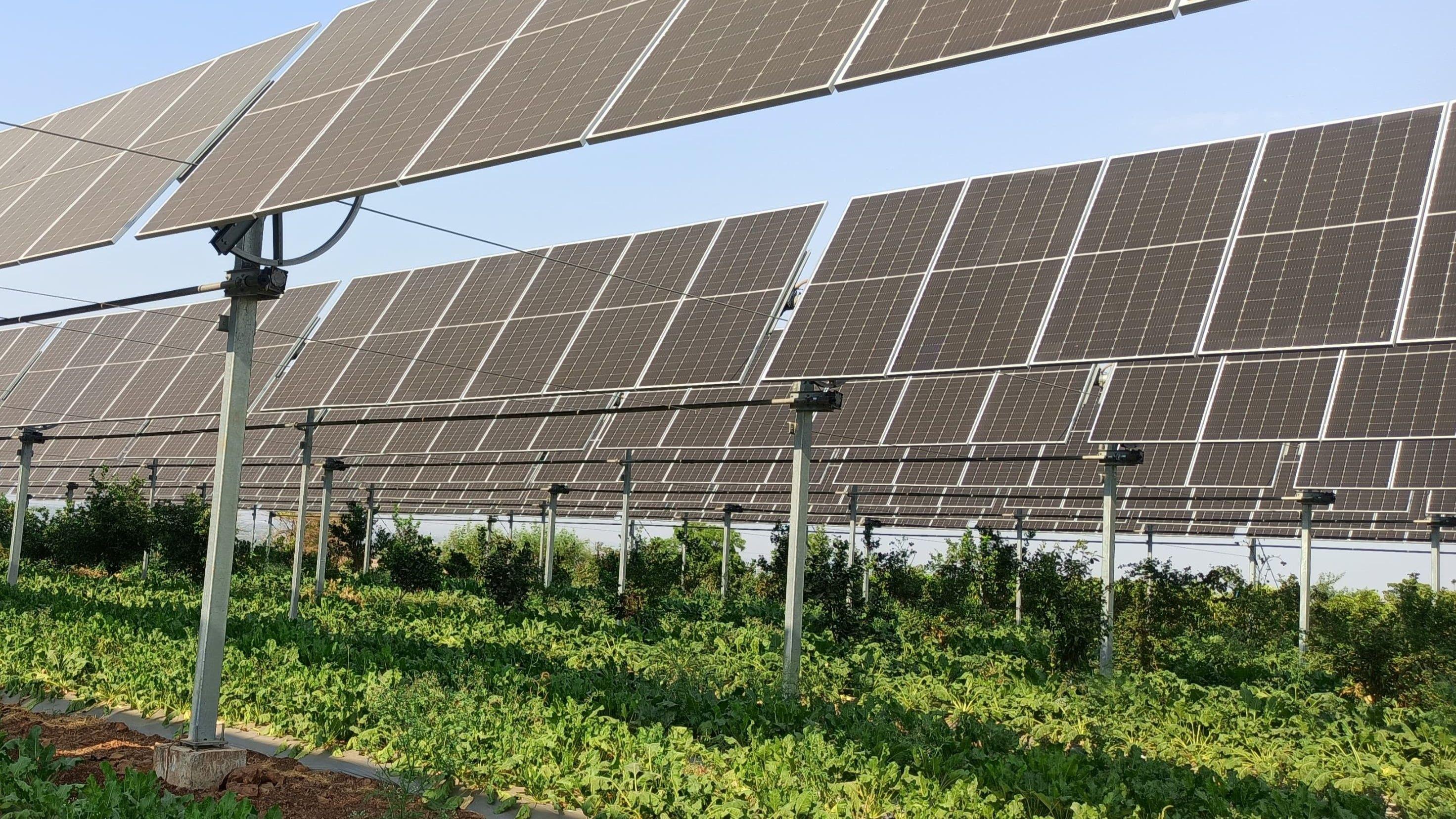Can solar-powered farming take root?

A New Approach to Farming and Solar Power
As a farmer, Harpal Dagar has always faced the unpredictability of nature. “You're always at the mercy of weather,” he says. “So many times, we lost our produce due to unpredictable conditions.” However, five years ago, his life changed when Sun Master, a solar power company based in Delhi, approached him with an innovative idea. The proposal involved installing solar panels above some of his fields, allowing him to continue farming underneath them. This concept, known as agrivoltaics, has the potential to revolutionize agriculture by combining renewable energy production with crop cultivation.
Under a 25-year agreement, Dagar receives annual payments from Sun Master, while the company retains the electricity generated. “When the solar company first approached us, many of us feared losing our land. It sounded too good to be true—maybe even a scam,” he recalls. But today, he sees it as one of the best decisions he’s ever made. His income has tripled, and he no longer faces the stress of climate-related crop failures.
Sun Master pays Dagar approximately $1,200 per acre annually, plus an additional $170 per month for operating and maintaining the solar panels. “Even the turmeric I grow on the same land is mine to sell. How can I complain?” he says. This model ensures that farmers like Dagar can benefit from both agricultural and energy production without sacrificing their livelihoods.
Challenges and Opportunities in Agrivoltaics
India appears well-suited for agrivoltaics, given the vulnerability of its farmers to erratic monsoons. A reliable income from solar energy firms could offer much-needed financial stability. However, adoption has been slow. According to the National Solar Energy Federation of India (NSEFI), only around 40 projects are currently operating in the country.
One of the main challenges is the impact of solar panels on crop growth. Depending on the layout, panels can reduce sunlight by between 15% and 30%, which may not be suitable for all crops. “What works well are high-value crops with moderate or low-light needs, like green leafy vegetables, spices such as turmeric and ginger, and some flowers,” explains Vivek Saraf, founder and CEO of SunSeed, a company specializing in agrivoltaics.
Another issue is the cost. To allow farming underneath, solar panels must be installed at least 11 feet (3.5 meters) off the ground, making them 20% to 30% more expensive than traditional installations. “Small farmers cannot own these systems. They don’t have the risk appetite or capital,” Saraf says. He advocates for government subsidies to make agrivoltaics more accessible.
Government and Industry Perspectives
Subrahmanyam Pulipaka, CEO of NSEFI, emphasizes the transformative potential of agrivoltaics. “It reduces irrigation needs, shields crops from heat stress, and stabilizes incomes by diversifying revenue streams for farmers,” he says. For rain-fed and climate-vulnerable regions, this approach could play a crucial role in building resilience against unpredictable weather patterns.
SunSeed offers farmers multiple options, including continuing to farm for a fixed salary or handing over all responsibilities to the company. “Our model ensures the farmer is not exposed to any risk. If the crop fails or there's a market issue, the loss is ours—not the farmers’,” says Saraf.
The company also uses advanced simulation software to optimize panel configurations and crop types. “We digitally replicate panel setups and crop varieties to simulate how much light and heat each leaf receives, how photosynthesis is affected, and ultimately how much yield to expect,” he explains.
Despite the promise, government officials remain cautious. Manu Srivastava, who oversees solar and agrivoltaic projects in Madhya Pradesh, highlights the need for clear contracts. “Agrivoltaics is promising, but we must protect both the farmer and the developer,” he says. Long-term contract enforcement remains a challenge in India.
Success Stories and Future Prospects
Anand Jain, a farmer from a family of herbal growers, found inspiration in a plot of land without electricity. “Necessity is the mother of invention,” he says. In 2024, he began experimenting with agrivoltaics, eventually setting up 14 acres of farmland under solar panels. The system generates 4.5 megawatts of power, equivalent to a medium-sized wind turbine.
Jain continues to experiment with crops, noting success with strawberries and tomatoes, though cauliflower did not perform as well. The project was funded through bank loans and government support, totaling $2.27 million. “Let me be clear—agri-voltaics isn’t yet feasible for small farmers in India,” he says. “This model will only succeed if there is a strong partnership between the government and the private sector.”
While India lags behind China, which has over 500 agrivoltaics projects, experts believe the country has the potential to lead in this field. “If the farmer’s economic interest is protected, if the right crops are chosen, and if contracts are clear and fair, there’s no reason India cannot lead in agrivoltaics,” says Srivastava.
Post a Comment